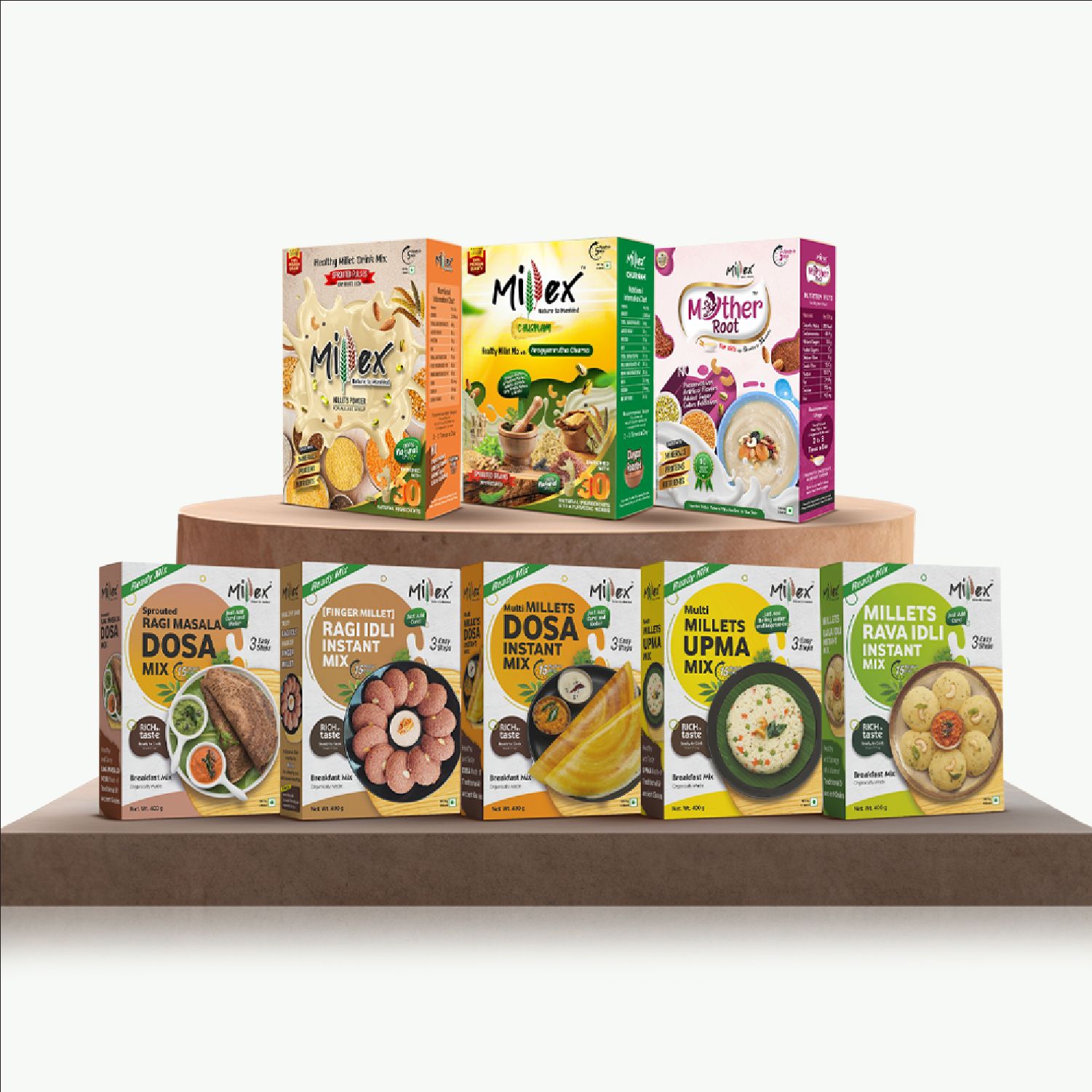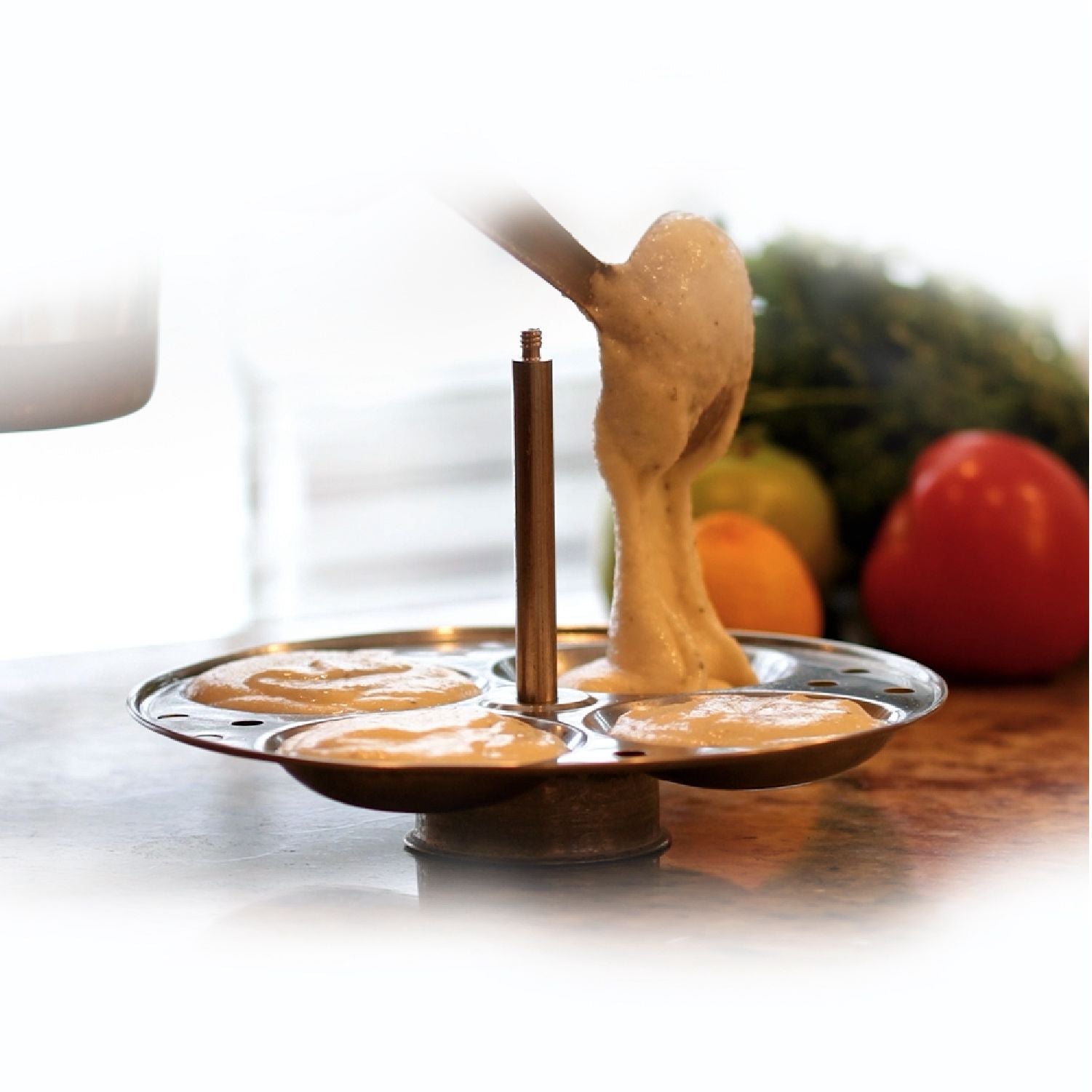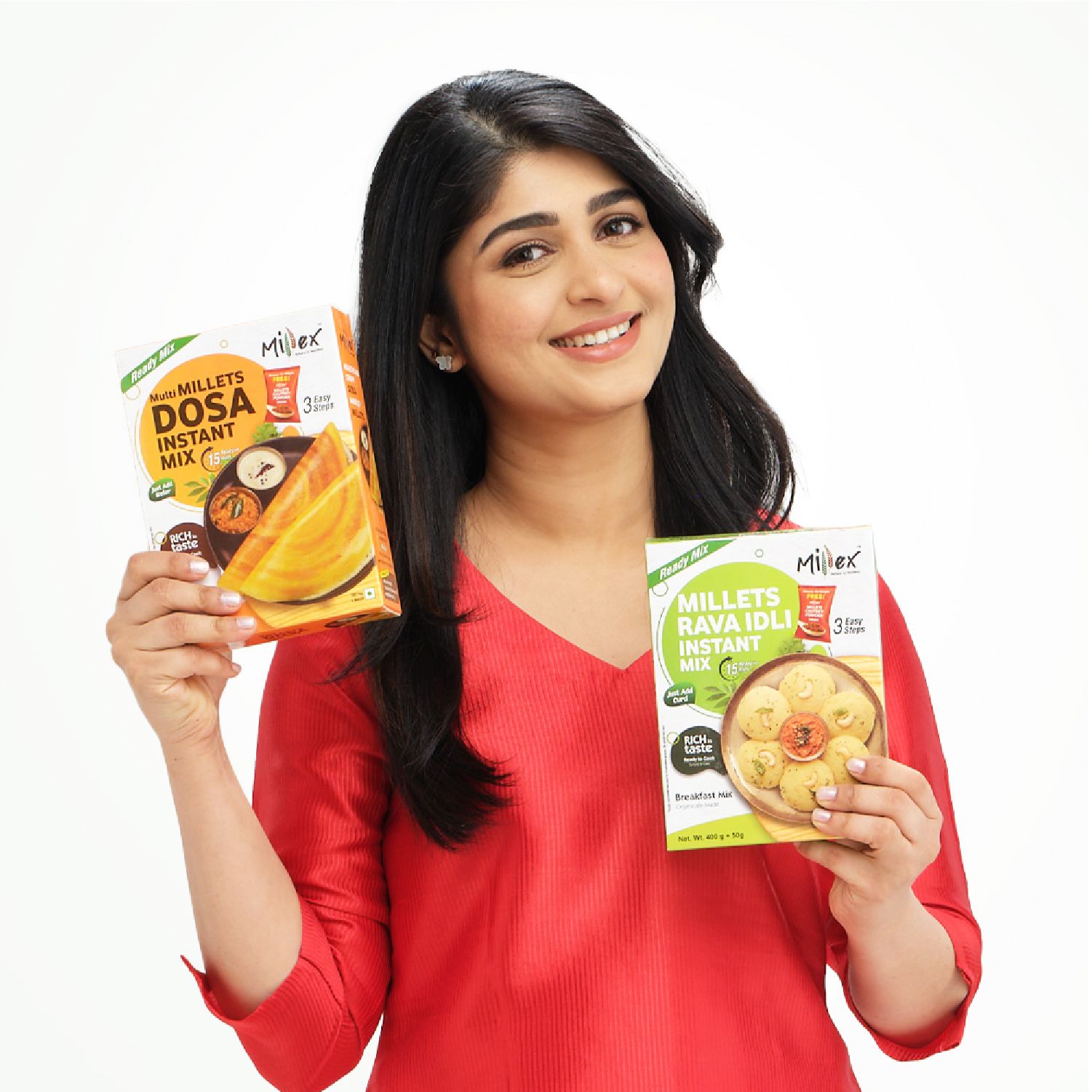Nowadays, diabetes prevalence is on the rise. People want to switch their diet routines for better diabetes management. This led to the advent of various millet health mixes, health mix powders, millet flour, etc.
Since overconsumption of millets or wrong integration can lead to specific concerns. So, we need to blend whole grains, millets, fruits, and vegetables into our daily routine.
The Millex Millet Health Mixes are your nutrient-packed solution for balanced nutrition. Millex brings you a range of wholesome and convenient millet-based health mixes designed to elevate your daily nutrition intake. With 30+ natural ingredients, it is a perfect choice for individuals managing Diabetes.
How did millets come into the play?
As we look at our current daily food routine, we are adding so many salads, healthy vegetables, and oil-free rotis. This is because people are becoming too health conscious in today's hustle and bustle.
So when these millet for Diabetes got priority? Millets are a group of grains that have been cultivated for thousands of years. Its nutrition profile, vast benefits, and versatility led to its comeback.
Nutritional Profile: Millets vs. Other Grains
One of the primary reasons for the growing popularity of millets, especially among individuals with Diabetes, is their impressive nutritional profile. Let's compare the nutritional composition of millet with that of commonly consumed grains like wheat and rice:
Glycemic Index (GI):
The glycemic index measures how quickly carbohydrates in food raise blood sugar levels. Foods with a high GI cause a rapid spike in blood sugar. Foods with a low GI result in a slower, more gradual increase.
Millets generally have a lower GI compared to wheat and rice. This makes them preferable for individuals with Diabetes. For example, pearl millet has a GI of 55. Wheat and rice have GIs ranging from 70 to 90.
Fiber Content:
Millets are rich in dietary fiber. It is beneficial for diabetes management. Fiber slows down the absorption of glucose in the bloodstream. It helps to prevent sudden spikes in blood sugar levels after meals.
Millet varieties like foxtail millet contain approximately 8 grams of fiber per 100 grams, significantly higher than the fiber content found in refined grains like white rice or wheat flour. Rice and wheat have had their fiber content removed during processing.
This abundant fiber contributes to improved digestive health, enhanced satiety, and better blood sugar control, making millet an excellent choice for individuals seeking to increase their fiber intake.
Protein Content:
As we all know, Millets are a good source of plant-based protein. It is essential for maintaining muscle mass and promoting satiety. Some varieties of millet, such as finger millet (ragi), have higher protein content compared to wheat and rice.
For example, finger millet consist protein content of around 7-8 grams per 100 grams, while rice typically contains only 2-3 grams of protein per 100 grams. This higher protein content in millets contributes to their reputation as a nutritious and satiating food choice.
Including protein-rich foods in the diet can help stabilize blood sugar levels and reduce the risk of hunger-induced overeating.
Micronutrients:
Millets are rich in vitamins, minerals, and antioxidants. These play a crucial role in overall health and well-being. Finger millet is particularly notable for its calcium and iron content, with ragi containing around 350 mg of calcium and 3.9 mg of iron per 100 grams.
These nutrients are important for bone health and preventing anemia. In comparison, refined grains like white rice and refined wheat flour are stripped of many essential nutrients during processing.
Gluten-Free:
Millets are naturally gluten-free. These are suitable for individuals with celiac disease or gluten sensitivity. Gluten is a protein found in grains like wheat, barley, and rye. It can trigger adverse reactions in some people.
By choosing gluten-free alternatives like millet, individuals with Diabetes can enjoy range of grains without worrying about gluten-related complications.
Millets vs. Other Grains Influence on Blood Sugar Regulation
Millets, in contrast to many other grains, have a notable influence on blood sugar regulation due to their unique composition and digestion process.
With intact bran and germ layers, millets function as whole grains, slowing down digestion and leading to a gradual increase in blood sugar levels. The complex carbohydrates present in millet contribute to a more stable glucose response compared to refined grains.
It can prevent rapid spikes in blood sugar. While research often focuses on specific millet varieties like foxtail millet, overall findings consistently suggest a positive impact on blood sugar levels.
In comparison, refined grains like white rice and wheat flour lack the fiber and nutrients present in millet. It potentially leads to more significant fluctuations in blood sugar levels. Therefore, incorporating millet into the diet may offer benefits for individuals seeking to manage blood sugar levels effectively.
Cooking and Culinary Versatility
While following diabetes diet with refine rice and wheat we often feel bored of consuming same food. Another advantage of millets is their versatility in cooking and culinary applications.
Millets can be used in a variety of dishes, including porridge, pilafs, salads, baked goods, and even fermented beverages. To make it more simple, millet mix powder is there.
Their unique flavors and textures add diversity to meals and can help individuals with Diabetes adhere to a balanced and enjoyable diet.
Practical Tips for Including Millets in the Diet
Here are some practical tips for incorporating millet into a diabetes-friendly diet:
- Substitute refined grains like white rice and refined wheat flour with whole grain millets like foxtail millet, pearl millet, or finger millet.
- Explore new recipes that feature millet as the main ingredient. Try making millet porridge, pilafs, salads, or baked goods like muffins and cookies.
- Combine millets with other nutritious ingredients like vegetables, legumes, and lean proteins to create balanced and satisfying meals.
- Pay attention to portion sizes when consuming millets, as they still contain carbohydrates that can affect blood sugar levels. Aim for balanced meals that include a variety of food groups.
Here is your wholesome diabetes meal plan
A perfect combination of millet and other grains in a daily diet can provide a balanced and nutritious meal plan.
Breakfast:
Start your day with a hearty breakfast by combining equal parts of cooked foxtail millet and rolled oats. This blend offers a mix of complex carbohydrates and fiber to keep you energized throughout the morning.
Lunch:
For lunch, opt for a colorful salad featuring cooked quinoa, a pseudo-cereal rich in protein and essential amino acids, mixed with pearl millet (bajra) for added texture and nutrients. Pair it with a side of whole wheat bread for a wholesome meal that satisfies both taste and nutritional needs.
In the evening, go with a comforting bowl of vegetable khichdi made with a combination of brown rice and finger millet. This savory dish provides a good balance of carbohydrates, protein, and fiber, perfect for replenishing energy after a busy day.
Dinner:
Savor a flavorful pilaf with a mix of cooked sorghum (jowar) and barnyard millet for dinner. This combination offers a delightful blend of textures and flavors and a diverse array of vitamins and minerals essential for overall health.
By incorporating a variety of millets and other grains into your daily diet, you can enjoy a well-rounded and nutritious eating plan that supports optimal health and wellness.
Choosing between millets vs. other grains
In the debate between millets and other grains for diabetes management, millets emerge as a promising contender. This is due to their low glycemic index, high fiber and protein content, and rich micronutrient profile.
By incorporating millet into their diet, people with Diabetes can enjoy a diverse range of nutritious grains that support blood sugar control and overall health.
Focus on portion control and balanced meal planning to optimize the benefits of millet while managing Diabetes effectively. With their culinary versatility and nutritional advantages, millets are worth considering as part of a diabetes-friendly diet.
Choose Millex millet health mixes for a healthy and happy diabetes diet!
Millex Millet Health Mix without Churnam is a nutritious blend of 30 natural ingredients, including millets, cereals, pulses, dry fruits, nuts, seeds, and spices. You can enjoy the benefits of this 100% natural blend with zero artificial flavors, additives, or colors.
This will be your perfect companion for a wholesome and flavorful addition to your diet. Packed with the goodness of millets, Millex Millet Health Mix without Churnam offers a delicious and convenient way to incorporate the benefits of millets into your diet.
To boost energy, manage weight, or simply enjoy a nourishing meal, Millex Millet Health Mixes are your go-to choice for health-conscious living. Order yours now!






